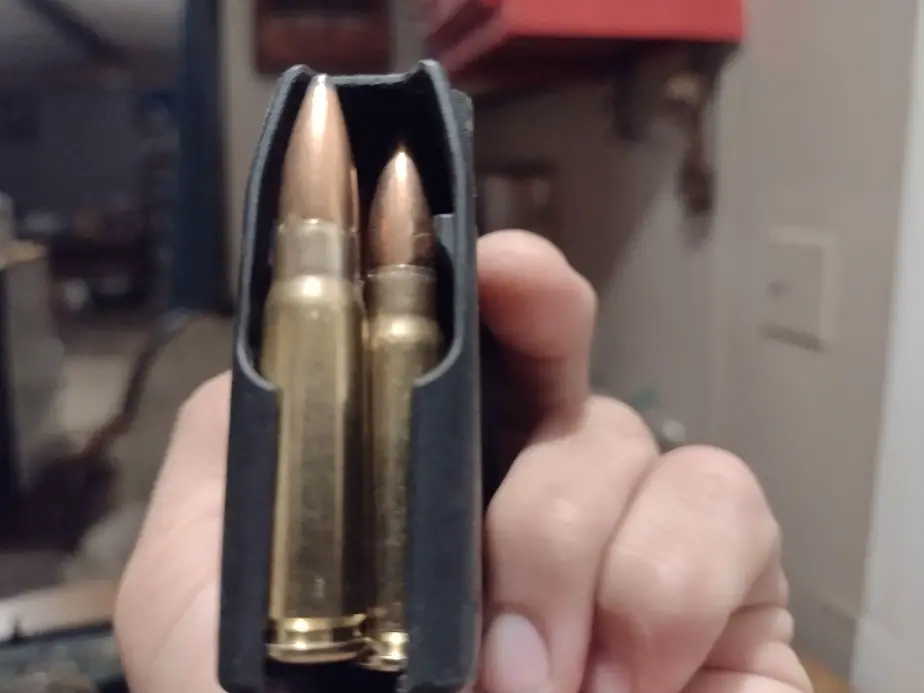7.62×39 is a very practical little round. In many areas, it’s a perfect option for deer and bear hunting. That’s what I use these days. Let me tell you, it works fantastic for me!
The 7.62×39 cartridge is a good option for hunting. It works great for deer, black bears, and smaller animals. It is a shorter-range rifle but will kill a deer out to 200 yards. Its 30 caliber bullet and low recoil make it an effective and easy to hut with option for all shooters.
This odd little round is really quite incredible. There’s a lot I bet you didn’t know about it, and that’s why I’m recommending it as general use hunting rifle. As the saying goes, the proof is in the pudding. Read on and see for yourself!
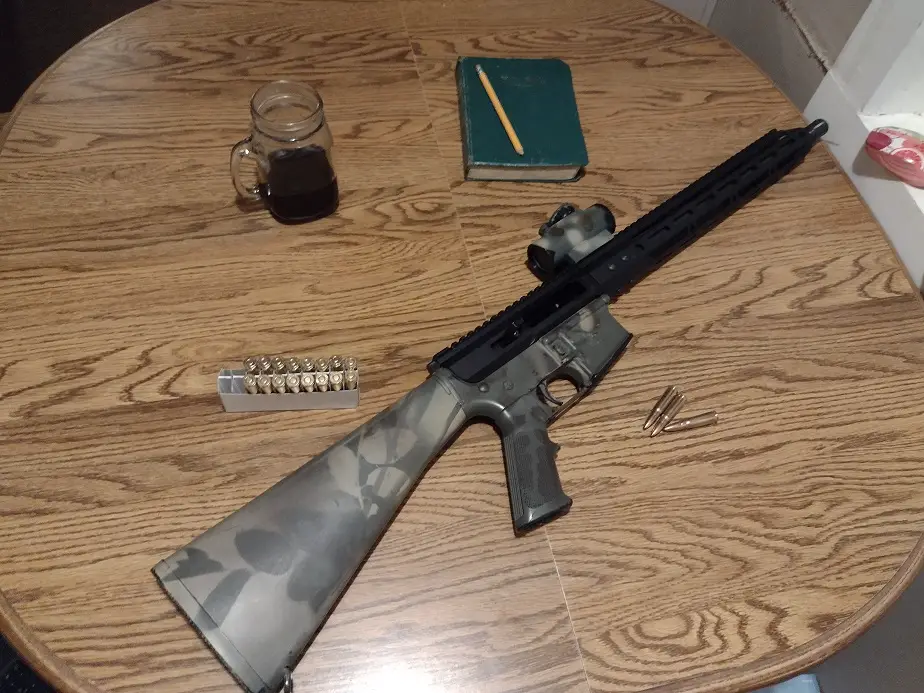
7.62×39 is a Great 150-Yard Hunting Rifle
The 7.62×39 cartridge is a short-range option, but it’s very effective within its range. It’s a low-recoil deer killing machine at 150 yards, and it still works a bit further if you know the drop and wind drift of your bullet. I’ve seen numerous clean kills between 200 and 250 yards.
Here, I’ve compared two common hunting loads. These are both brass-cased, basic soft point ammo that will expand at speeds of 1600 fps or above. It’s a very traditional bullet type suitable for these slower rounds. I’ll cover steel-cased rounds in the next table.
| 7.62×39, Sellier & Bellot Soft Point, 123gr/ 7.62×39 Federal Soft Point, 123gr | |||||
|---|---|---|---|---|---|
| Range (yards) | Drop (inches) | Velocity | Energy | Wind drift in 10mph crosswind (inches) | Time in flight (seconds) |
| 0 | -1.4921 -1.4918 | 2437 2349 | 1622 1507 | 0 0 | 0 0 |
| 25 | -0.4960/ -0.4591 | 2348 2374 | 1505 1412 | 0.1 0.1 | .03 .03 |
| 50 | 0.1058 0.1531 | 2261 2200 | 1396 1322 | 0.4 0.4 | .06 .06 |
| 75 | 0.2822 0.3163 | 2175 2127 | 1292 1235 | 0.9 0.9 | .09 .10 |
| 100 | -0.0009 -0.0010 | 2091 2056 | 1194 1154 | 1.77 1.6 | .13 .13 |
| 125 (hydrostatic shock begins to diminish) | -0.7813 -0.8325 | 2009 1986 | 1102 1077 | 2.8 2.5 | .17 .17 |
| 150 | -2.1002 -2.2152 | 1929 1918 | 1016 1005 | 4.0 3.6 | .20 .21 |
| 175 | -4.0032 -4.1891 | 1851 1851 | 936 936 | 5.6 5.0 | .24 .25 |
| 200 | -6.5405 -6.7978 | 1776 1785 | 861 870 | 7.5 6.7 | .28 .29 |
| 225 | -9.7674 -10.0884 | 1702 1722 | 791 810 | 9.7 8.6 | .32 .33 |
| 250 (max effective range) | -13.7446 -14.1125 | 1631 1660 | 726 752 | 12.2 | .37 .38 |
| 275 | -18.5388 -18.9254 | 1563 1600 | 667 669 | 15.0 13.2 | .42 .42 |
| 300 | -24.2230 -24.5876 | 1497 1542 | 612 649 | 18.2 16.0 | .47 .47 |
Things to take notice of are velocity and bullet energy. If the velocity goes below 1600 fps, the bullet probably won’t expand and the wound tract will be very small. At that point, it is impossible to make an ethical shot on a deer.
Another interesting velocity point to consider is the barrier of hydrostatic shock. That is when the wound channel is much wider than the bullet diameter. The energy from a bullet causes nearby tissue to move and stretch. If the energy is going fast enough, the tissues will simply tear apart.
That is generally noticeable at velocities over 1800 fps. At 2000 fps, it is quite devastating. The chart shows over 2000 fps at 125 yards, at that distance and under, you can literally turn a deer’s chest cavity to pudding. This effect continues to diminish until about 185 yards. So, at 150 and under, the bullet will create a very clean, fast kill if you make a good shot.
At 200 plus yards, the bullet won’t make as big of a wound, but the bullet will still expand and penetrate enough to cause a wound comparable to the 357 Magnum, quite enough for a deer.
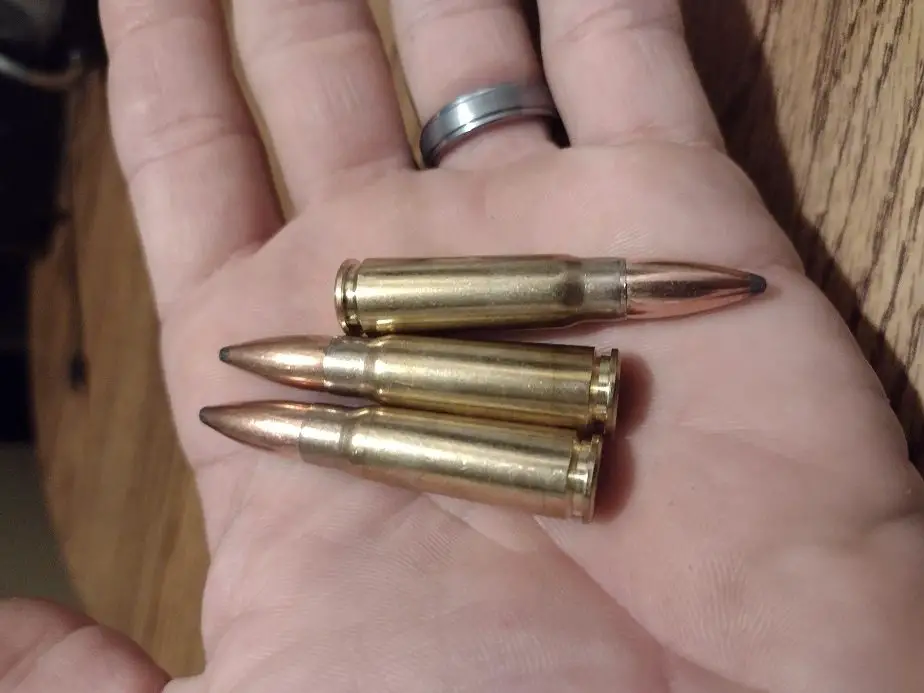
It Shoots like a 357 Magnum, but at 275 Yards!
Many authorities say that you need a bullet with 1000 ft/lbs of energy as a minimum for deer. That’s not a bad idea. According to that, these loads are good to 150 yards. but, I consider a more realistic minimum energy to be 600 ft/lbs if you limit yourself to a good broadside shot.
Case in point: the 357 Magnum revolver is a classic deer hunting pistol. It’s considered good to 75 or 100 yards in the hands of a good marksman. Most 357 hunting loads start out with less than 675 ft/lbs. of energy. To put things in perspective, that equates to the 7.62×39 at 275 yards.
I have to say that the max practical distance for me is 150 yards. That’s because it’s a point-and-shoot distance. There’s no need to adjust for bullet drop, and there is minimal wind drift. Further than that and you have to start compensating for drop and windage. In reality, it’s good to 250 yards on deer if you can make a good shot.
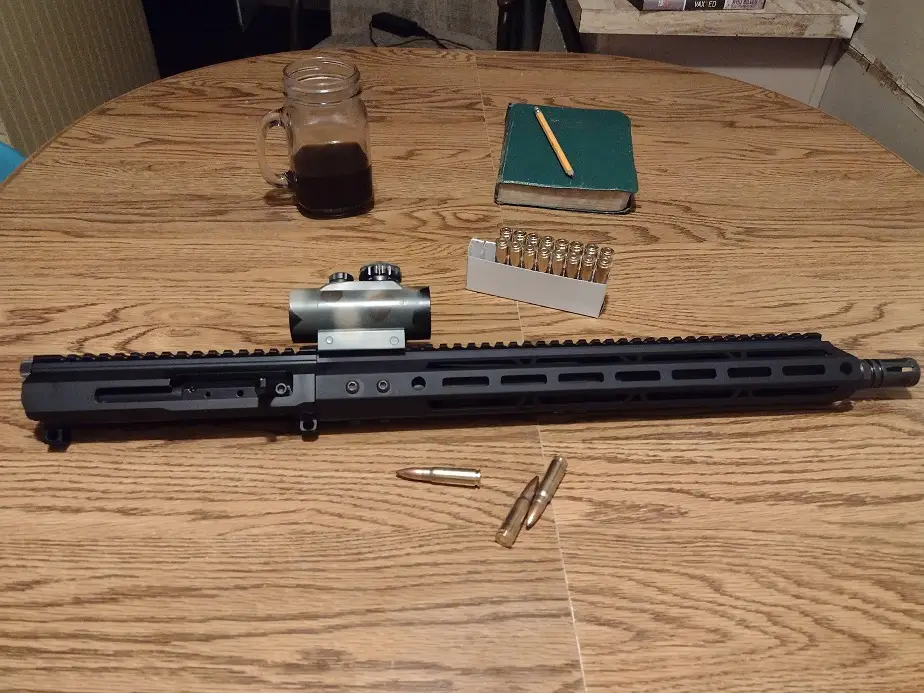
The 7.62×39 has one-third the Recoil of a 30-06
Rifles chambered in 7.62×39 has an average felt recoil of 7.4 ft/lbs. The recoil is soft and doesn’t feel harsh even to small-framed persons. The recoil of 7.62×39 is easy to manage and easy to handle. And, it’s much less than most hunting rifles.
That’s very mild in the realm of hunting rifles. Most hunting rifles have at least 15 ft/lbs of recoil. The fabulous 30-06 averages 21 ft/lbs of recoil, which is three times that of the 7.62×39. That’s fairly astounding really. If you’ve never fired an easy recoiling rifle, boy you are in for a treat. It’s just easy and fun.
Under 14 ft/lbs. is considered an easy shooting rifle, and 10 and under is great for youth hunters. Light recoiling rifles increase accuracy. The US army discovered this immediately during trials of the M16 rifle. Soldiers immediately scored higher and did so quickly due to the lower recoil.
Low recoil reduces flinching during the trigger pull and allows you to get back on target quickly for a follow-up shot. that’s why I switched to 7.62×39. It’s easy to shoot and shoot well.
30/30 vs 7.63×39, Same Effective Range
The 30/30 and 7.62×39 both have a maximum effective distance of about 200 yards for deer hunting. They are both 30 caliber, but the 7.62×39 is lighter and uses velocity to keep up the energy whereas the 30/30 relies on weight. When compared side by side, the 7.62 has less drop, less wind drift, and retains bullet expansion velocity longer.
That in itself is fairly impressive. The 30/30 has a clear advantage in the first 75 yards, but after that, the gaps begin to close quickly. At close range, the 7.62×39 definitely has enough energy to do its job. The 30/30 is a good old round, but the 7.62×39 seems to edge ahead of it in every category.
Here’s a video I made on Hunting with 7.62×39.
7.62×39 Works Great in an AR-15
Here’s the best part in my mind. It works very well in modern sporting rifles (AR-15’s). What’s so awesome about that you ask? Mainly that it reduces recoil over a standard hunting rifle. Also, if you already have an AR, you can simply buy a barreled upper instead of a complete rifle.
I bought a barreled upper from Bear Creek Armoury for a little over $300 shipped. There’s no paperwork or anything required. Just order it. It only takes 45 seconds to swap uppers on my AR from a .223 to 7.6×39. It shoots well, and feeds flawlessly.
7.62×39 for Hunting Hogs
The 7.62×39 makes a perfect hog gun. Its 30 caliber bullet creates a large wound channel. The low recoil makes it easy to make quick follow-up shots, and it has more than enough penetration for mature hogs.
I have a brother in Texas who loves to go hog hunting. He tells me that a lot of the younger shooters out there are preferring 7.62×39 as a hog rifle. There is abundant cheap ammo available, and it makes a big hole in a mature hog. In fact, most of them are using steel-cased ammo, and some are using fmj bullets.
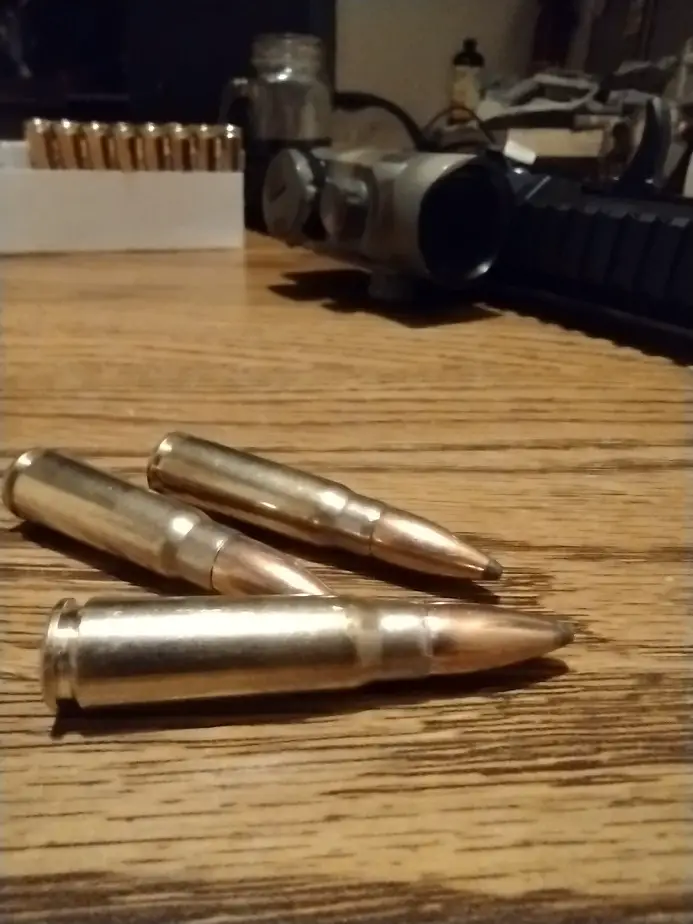
Best Overall 7.62×39 Hunting Ammo
Barnaul makes a steel-cased, 125-grain, soft point load with a stated velocity of 2533 fps. It’s the hottest hunting load I know of in 7.62×39. It’s also pretty cheap. It’s not the most accurate load, usually limiting practical accuracy to 100 or 150 yards, but a lot of hug hunters have been using it for years with great success.
Steel cased ammo can have issues feeding in some guns. Although it’s not that common, it happens. Most of the time, it’s in an AR. According to my gunsmith, it’s an issue with machine marks in the chamber and polishing should take care of it.
AR,s may need an “enhanced firing pin to shoot it well. The manufacturing tolerances of the primers in steel-cased ammo (Russian design) may fall outside of what US firing pins can handle. Most seem to work, but if your firing pin is a little on the short side (fine for US ammo) it may not hit the Russian-designed primers properly.
The firing pin is only ten bucks it’s super simple to replace. I did that with my rifle. All it took was my multitool and five minutes to get it done.
If you would like to know more about the 7.62×39 cartridge, I wrote another article titled 7.6239 For Hunting and Shooting. Here’s a link to it.
7.62×39 For Elk, it’s a bit iffy
A 7.62×39 can kill an elk. Ethical shots are limited to 100 yards in order to ensure penetration and a quick kill. A good broadside shot is necessary, and you must avoid the shoulders to ensure full penetration. The proper target zone is the lungs, on a good broadside shot angle. A bull elk can weigh 900 pounds, so there is no room for error.
This would probably be more of a desperate move. If I had to, I certainly could and would kill an elk with my x39. Apart from a true hardship, I’d advise against it because if anything goes wrong, it may not make a clean kill. nobody wants to track a wounded animal miles across the wilderness. It’s the responsibility of us hunters to do our best to kill an animal quickly.

